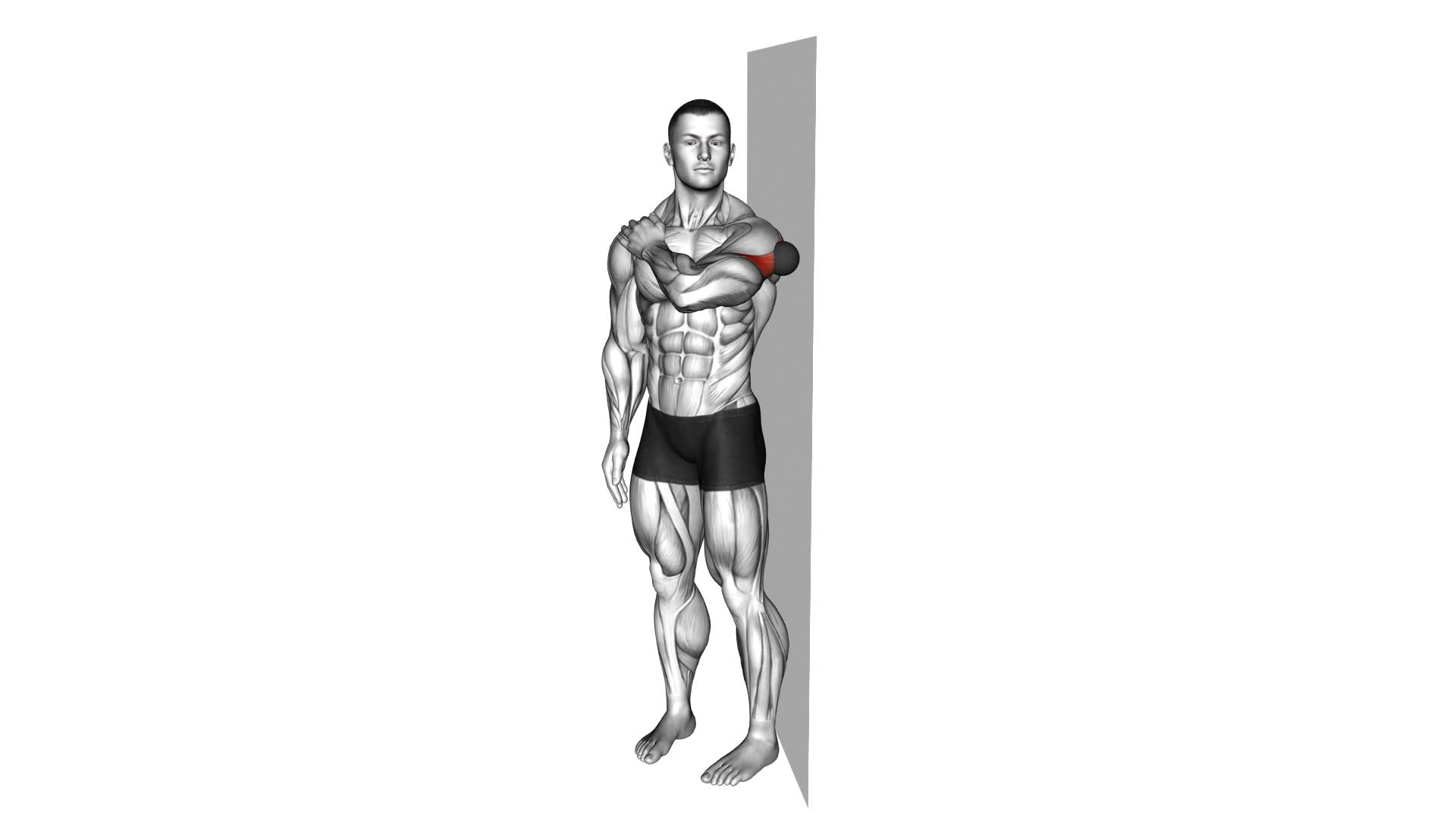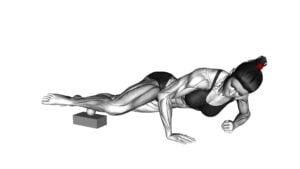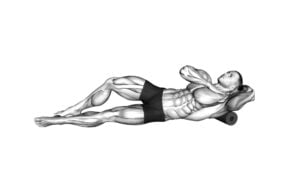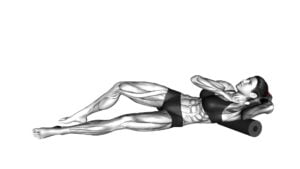Roll Ball Deltoid Posterior – Video Exercise Guide & Tips

Are you looking for a quick and effective exercise to target your deltoid posterior? Look no further than the Roll Ball Deltoid Posterior exercise!
Watch This Exercise Video
In this video exercise guide, we'll show you the proper form and technique, as well as variations and progressions to challenge yourself.
Plus, we'll share tips to help you maximize the effectiveness of this workout.
Get ready to strengthen and tone your deltoids with this simple yet powerful exercise.
Let's get started!
Key Takeaways
- The Roll Ball Deltoid Posterior exercise targets and strengthens the deltoid muscles in the shoulders.
- It improves overall shoulder stability and reduces the risk of injury, making it effective for injury prevention.
- The exercise promotes muscle activation and enhances strength and definition of the shoulders.
- Equipment such as stability balls, dumbbells, resistance bands, and cable machines can be used to perform the exercise, and proper form and technique should be followed.
Benefits of the Roll Ball Deltoid Posterior Exercise
One major benefit of the Roll Ball Deltoid Posterior exercise is that it targets and strengthens the deltoid muscles in your shoulders. This exercise specifically activates the posterior deltoids, which are responsible for shoulder extension and external rotation. By strengthening these muscles, you can improve your overall shoulder stability and reduce the risk of injury.
The Roll Ball Deltoid Posterior exercise is also effective for injury prevention. Strong deltoid muscles help to stabilize the shoulder joint and prevent excessive movement or strain. This can be particularly beneficial for athletes or individuals who engage in activities that involve repetitive shoulder movements, such as throwing or swimming.
In addition to injury prevention, the Roll Ball Deltoid Posterior exercise also promotes muscle activation. By engaging the deltoid muscles, you can enhance the overall strength and definition of your shoulders. This exercise is particularly effective for targeting the posterior deltoids, which are often underdeveloped compared to the anterior and lateral deltoids.
Equipment Needed for the Roll Ball Deltoid Posterior Workout
To properly perform the Roll Ball Deltoid Posterior exercise, you'll need to use a stability ball. This equipment is essential for targeting your deltoid posterior effectively.
Here are some recommended equipment options for your deltoid posterior workouts:
- Stability Ball: A stability ball is the main equipment needed for the Roll Ball Deltoid Posterior exercise. It helps engage your core and stabilizer muscles while targeting your deltoid posterior.
- Dumbbells: Adding dumbbells to your deltoid posterior workouts can increase the intensity and challenge your muscles further. Start with lighter weights and gradually increase as you build strength.
- Resistance Bands: Using resistance bands can provide added resistance and help activate your deltoid posterior muscles. They're portable and versatile, allowing you to perform various exercises targeting this muscle group.
- Cable Machines: Cable machines with adjustable weights and pulleys are excellent for isolating and targeting the deltoid posterior. They offer a wide range of exercises that can effectively strengthen and tone this muscle group.
Remember to consult with a fitness professional or trainer to ensure proper form and technique when using these equipment options.
Alternative exercises for deltoid posterior targeting include dumbbell rear delt flyes, bent-over lateral raises, and reverse cable crossovers.
Proper Form and Technique for the Roll Ball Deltoid Posterior Exercise
To perform the Roll Ball Deltoid Posterior exercise with proper form and technique, follow these steps:
- Position yourself on the stability ball. Lie face down on the ball, with your chest and abdomen supported by the ball and your feet on the ground for stability.
- Place your hands on the floor in front of you, shoulder-width apart, and extend your legs behind you so that your body forms a straight line from head to toe.
- Maintain a neutral spine and engaged core throughout the exercise.
- Slowly roll the ball forward by bending your elbows and allowing your body to move with the ball.
- As you roll forward, focus on squeezing your shoulder blades together and engaging your deltoid muscles in your posterior shoulders.
- Pause for a moment at the end position, feeling the contraction in your deltoids.
- Return to the starting position by straightening your arms and rolling the ball back.
It's important to avoid common mistakes such as letting your lower back sag or your hips rise too high, as this can strain your lower back. Keep your neck relaxed and your gaze down towards the floor to avoid straining your neck.
Modifications for the exercise can include performing it with your knees on the ground instead of your feet for added stability and support. This can be helpful for beginners or individuals with limited core strength.
Remember to always perform the exercise in a controlled manner, using slow and deliberate movements to engage the target muscles effectively.
Variations and Progressions for the Roll Ball Deltoid Posterior Workout
To add variety and challenge to your Roll Ball Deltoid Posterior workout, incorporate different variations and advanced progressions. Here are some options to keep your routine fresh and push yourself to new levels:
- Single Arm Roll: Perform the exercise with only one arm while the other arm remains extended in front of you. This variation increases the demand on the working deltoid and adds an element of stability.
- Plyometric Roll: Instead of performing a controlled movement, incorporate a plyometric element by explosively pushing off the ground and rolling onto the ball. This variation increases power and adds an element of dynamic movement.
- Weighted Roll: Hold a dumbbell, kettlebell, or weighted plate during the exercise to increase the resistance and challenge your deltoid muscles even more. Start with a lighter weight and gradually increase as you get stronger.
- One-Legged Roll: Perform the exercise while balancing on one leg. This variation adds an element of instability, requiring greater core and leg strength to maintain balance.
By incorporating these different variations and advanced progressions into your Roll Ball Deltoid Posterior workout, you won't only keep your routine interesting, but also continue to challenge and strengthen your deltoid muscles.
Remember to start with the variations that suit your current fitness level and gradually progress to more advanced variations as you become more comfortable and stronger.
Tips for Maximizing the Effectiveness of the Roll Ball Deltoid Posterior Exercise
To maximize the effectiveness of the Roll Ball Deltoid Posterior exercise, focus on maintaining proper form and engaging your deltoid muscles throughout the entire movement. This will ensure that you're targeting the correct muscles and getting the most out of the exercise.
One common mistake to avoid is using momentum to perform the exercise. It's important to control the movement and not rely on swinging your body to lift the ball. Instead, use your deltoid muscles to lift the ball and engage them throughout the entire range of motion.
Another tip is to make modifications if needed. If you find the exercise too challenging, you can start by using a lighter ball or even a towel. As you build strength, gradually increase the weight of the ball. Additionally, you can adjust the height of the ball by placing it on a lower surface, such as a bench or step, to make it easier.
Remember to listen to your body and only do what feels comfortable. If you experience any pain or discomfort, stop the exercise and consult a professional.
Frequently Asked Questions
How Many Sets and Reps Should I Do for the Roll Ball Deltoid Posterior Exercise?
To progress in the roll ball deltoid posterior exercise, focus on increasing the number of sets and reps gradually. Start with a comfortable number, like 2 sets of 10 reps, and gradually increase the intensity by adding more sets or reps.
You can also try variations of this exercise to target different areas of your deltoids.
Remember to listen to your body and adjust the sets and reps accordingly to avoid overexertion.
Can I Perform the Roll Ball Deltoid Posterior Exercise Without a Stability Ball?
Yes, you can perform the roll ball deltoid posterior exercise without a stability ball.
There are alternative exercises you can do to target the same muscle group, such as the standing dumbbell lateral raise or the seated cable lateral raise.
These exercises can be modified for beginners by using lighter weights or resistance bands.
Remember to maintain proper form and gradually increase the intensity as you progress.
Is the Roll Ball Deltoid Posterior Exercise Suitable for Beginners?
Yes, the roll ball deltoid posterior exercise is suitable for beginners. It targets the posterior deltoid muscles and helps improve shoulder stability.
To perform the exercise, lie face down on a stability ball with your feet against a wall. Keep your core engaged and slowly roll the ball forward while maintaining control.
Common mistakes to avoid include using momentum, arching the back, and not fully extending the arms. Focus on proper form and technique for optimal results.
What Muscles Does the Roll Ball Deltoid Posterior Exercise Target?
The roll ball deltoid posterior exercise targets the muscles in your shoulders, specifically the posterior deltoids. This exercise helps to strengthen and tone your deltoid muscles, giving you a more defined and sculpted appearance.
There are variations of this exercise that you can try, such as using different sizes or types of balls, or incorporating additional movements like a push-up or plank position. These variations can help to increase the intensity and challenge of the exercise.
Can I Incorporate the Roll Ball Deltoid Posterior Exercise Into My Upper Body Workout Routine?
Yes, you can definitely incorporate the roll ball deltoid posterior exercise into your upper body workout routine. It targets the posterior deltoid muscles, helping to strengthen and tone them.
To further enhance your shoulder workout, you can incorporate other shoulder exercises such as lateral raises and shoulder presses.
If you're looking for alternatives to the roll ball deltoid posterior exercise, you can try exercises like bent-over lateral raises or seated rear deltoid flyes. These exercises will also work the posterior deltoids effectively.
Conclusion
In conclusion, the roll ball deltoid posterior exercise is a highly effective way to target and strengthen the deltoid muscles in the shoulders.
It requires minimal equipment and can be easily modified to suit different fitness levels.
By maintaining proper form and technique, individuals can maximize the effectiveness of this exercise and achieve optimal results.
Incorporating variations and progressions can also help challenge the muscles and prevent plateaus.
Remember to consult a fitness professional before starting any new exercise program.

Author
Years ago, the spark of my life’s passion ignited in my mind the moment I stepped into the local gym for the first time. The inaugural bead of perspiration, the initial endeavor, the very first surge of endorphins, and a sense of pride that washed over me post-workout marked the beginning of my deep-seated interest in strength sports, fitness, and sports nutrition. This very curiosity blossomed rapidly into a profound fascination, propelling me to earn a Master’s degree in Physical Education from the Academy of Physical Education in Krakow, followed by a Sports Manager diploma from the Jagiellonian University. My journey of growth led me to gain more specialized qualifications, such as being a certified personal trainer with a focus on sports dietetics, a lifeguard, and an instructor for wellness and corrective gymnastics. Theoretical knowledge paired seamlessly with practical experience, reinforcing my belief that the transformation of individuals under my guidance was also a reflection of my personal growth. This belief holds true even today. Each day, I strive to push the boundaries and explore new realms. These realms gently elevate me to greater heights. The unique combination of passion for my field and the continuous quest for growth fuels my drive to break new ground.







